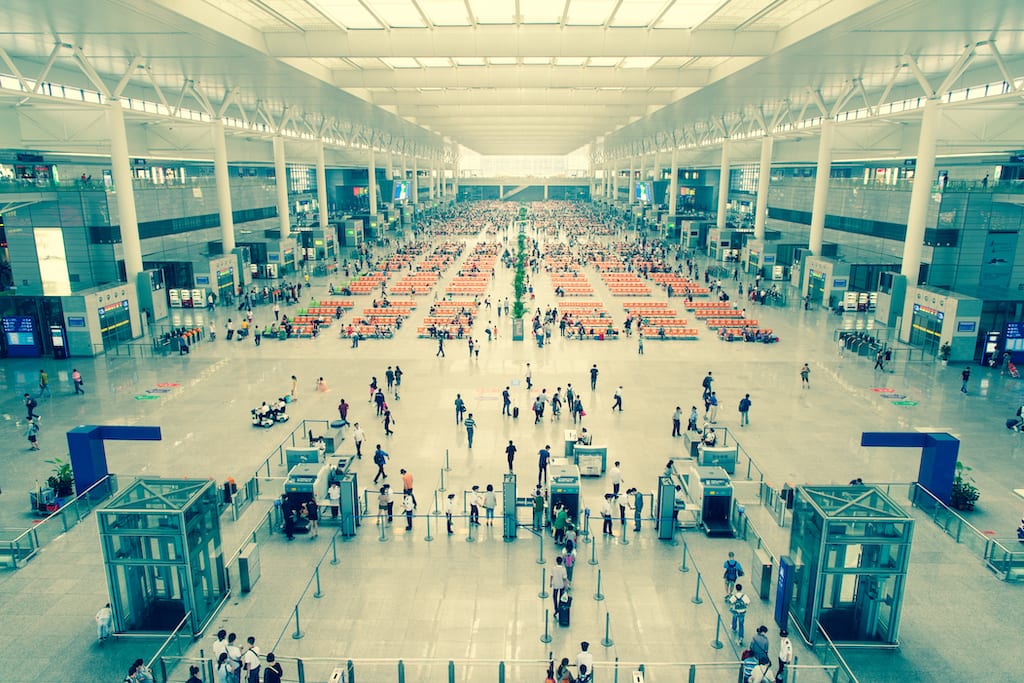Skift Take
China is expected to remain a hotbed of both domestic and international business travel. Chinese corporations are attempting to keep costs down even as the need for business travel increases.
The Chinese business travel market has become the biggest in the world in recent years and stands to continue its growth as the country’s secondary and tertiary cities become better connected to the rest of China.
Cities like Zhengzhou, Chongqing, and Chengdu are experiencing greater business growth than established cities like Beijing and Shanghai, according to the Global Business Travel Association, and companies are working to keep costs down even as the need to visit these destinations increases.
CITS American Express Global Business Travel and the Economist Intelligence Unit polled executives from more than 100 Chinese companies on the state of business travel in the country. Travelers most often want convenience along with direct flights and high-quality hotels, and 45 percent use mobile tools to arrange their business travel trips.
Business travel spending is expected to rise over the next year as China’s secondary cities become more accessible due to new airports and increased high-speed rail connectivity.
| Will Travel and Expense Spend Increase in the Next 12 Months? | |
|---|---|
| Increase | 48.4% |
| Stable | 41.4% |
| Decrease | 10.2% |
Source: CITS American Express Global Business Travel
There is a bureaucracy problem, though; 47 percent of those polled said there are too many stakeholders and complex internal bureaucracies to effectively manage travel in their organization. Costs are increasing and the priorities of travel managers may need to shift as new destinations become more popular.
“An interesting dynamic is emerging when it comes to business activity in China – in addition to domestic growth, China’s outbound direct investment is once again growing, indicating a focus on international business activity,” said Kevin Tan, vice president of CITS American Express Global Business Travel. “Travel managers now need to ensure travel programs and policies adequately cover the needs of travelers and companies in these new geographies. Emerging cities often lack the same level of infrastructure as more developed cities, creating a need to focus on spend categories that may have received a smaller budget allocation in the past, such as ground transportation.”
Keeping costs in check is the primary goal of Chinese travel policies, with talent retention and travel satisfaction ranked as not important.
| Top Goals of Travel Program | |
|---|---|
| Cost Saving | 62% |
| Company Compliance | 57% |
| Employee Safety | 46% |
| Talent Retention | 13% |
| Traveler Satisfaction | 2.9% |
Source: CITS American Express Global Business Travel
Those polled also identified areas that need improvement as the Chinese corporate travel market copes with increased travel. Companies are making it difficult for travel to receive reimbursement following trips and for trips themselves to be approved. In terms of travel options, though, travelers themselves are satisfied with their options.
| Problems With Travel Process | |
|---|---|
| Reimbursement Process Too Complex | 49% |
| Pre-Trip Validation Process Too Complex | 37% |
| Travel Conditions Not Flexible | 35% |
| Poor Accommodation Options | 10% |
| Poor Air Travel Options | 3% |
Source: CITS American Express Global Business Travel
Read the full report below.
The Daily Newsletter
Our daily coverage of the global travel industry. Written by editors and analysts from across Skift’s brands.
Have a confidential tip for Skift? Get in touch
Tags: business travel, china, corporate travel, ctir
Photo credit: Hongqiao railway station in Shanghai, China. Tauno Tõhk / Flickr
